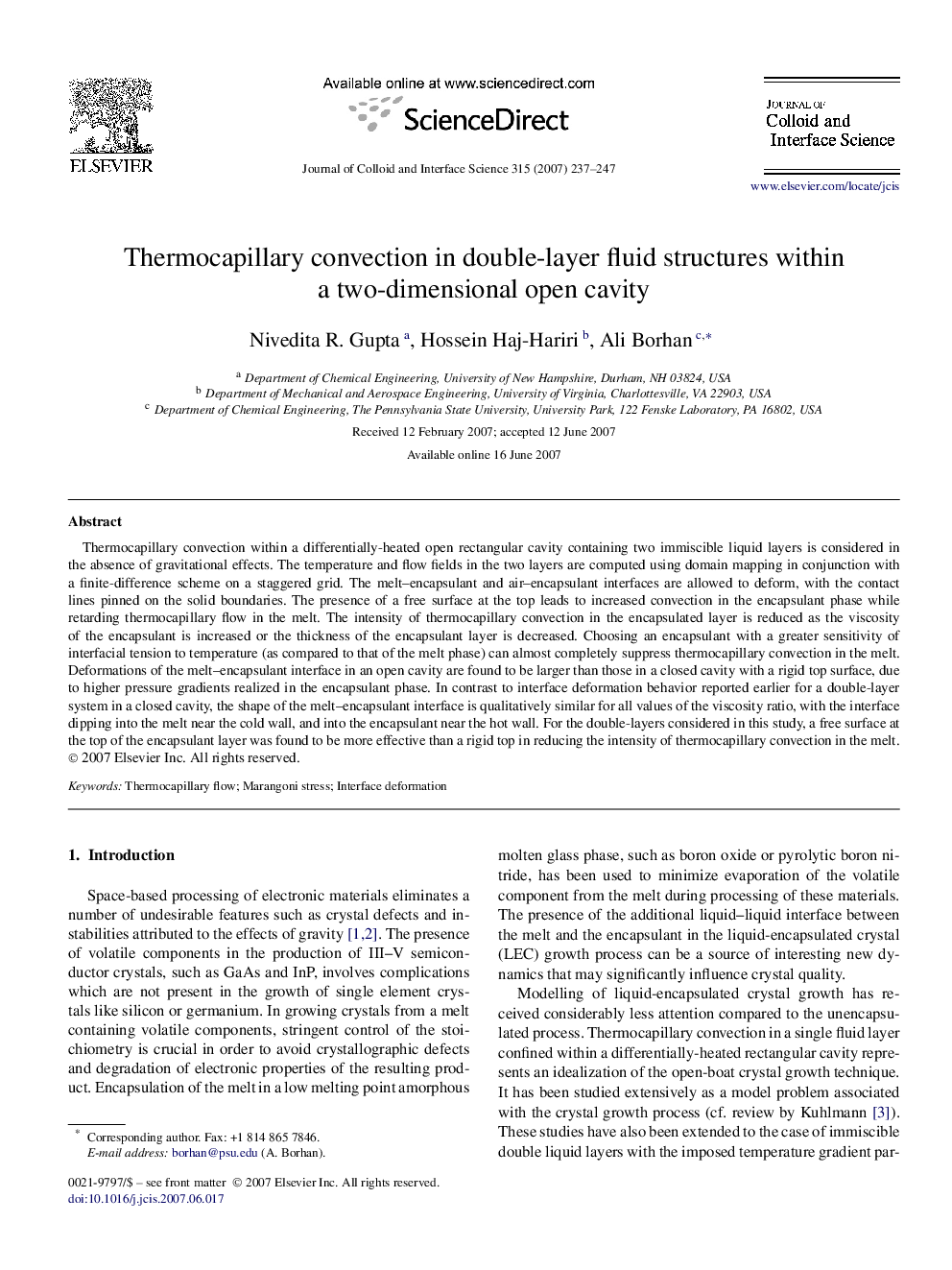| کد مقاله | کد نشریه | سال انتشار | مقاله انگلیسی | نسخه تمام متن |
|---|---|---|---|---|
| 612282 | 880694 | 2007 | 11 صفحه PDF | دانلود رایگان |

Thermocapillary convection within a differentially-heated open rectangular cavity containing two immiscible liquid layers is considered in the absence of gravitational effects. The temperature and flow fields in the two layers are computed using domain mapping in conjunction with a finite-difference scheme on a staggered grid. The melt–encapsulant and air–encapsulant interfaces are allowed to deform, with the contact lines pinned on the solid boundaries. The presence of a free surface at the top leads to increased convection in the encapsulant phase while retarding thermocapillary flow in the melt. The intensity of thermocapillary convection in the encapsulated layer is reduced as the viscosity of the encapsulant is increased or the thickness of the encapsulant layer is decreased. Choosing an encapsulant with a greater sensitivity of interfacial tension to temperature (as compared to that of the melt phase) can almost completely suppress thermocapillary convection in the melt. Deformations of the melt–encapsulant interface in an open cavity are found to be larger than those in a closed cavity with a rigid top surface, due to higher pressure gradients realized in the encapsulant phase. In contrast to interface deformation behavior reported earlier for a double-layer system in a closed cavity, the shape of the melt–encapsulant interface is qualitatively similar for all values of the viscosity ratio, with the interface dipping into the melt near the cold wall, and into the encapsulant near the hot wall. For the double-layers considered in this study, a free surface at the top of the encapsulant layer was found to be more effective than a rigid top in reducing the intensity of thermocapillary convection in the melt.
A free surface at the top of the encapsulant layer can be more effective than a rigid top in reducing the intensity of thermocapillary convection in the melt.Figure optionsDownload as PowerPoint slide
Journal: Journal of Colloid and Interface Science - Volume 315, Issue 1, 1 November 2007, Pages 237–247